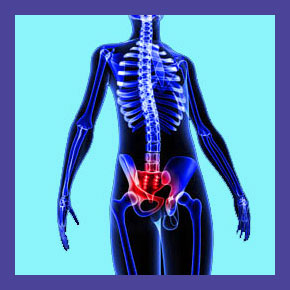
Do you suffer lower back pain when sitting cross-legged? There are specific reasons why back pain might occur when sitting with your legs crossed. Do you know what they are or how to stop them from ruining your time spent working, relaxing or just going about the normal activities of your life?
Sitting with the legs crossed is a traditional posture for women and is also preferred by some men. The position itself is innocent and certainly not pathological to health or the spine. However, in select circumstances, cross legged sitting can indeed instigate or exacerbate lower back pain through a variety of mechanisms.
This discussion provides an objective view of the reasons why cross-legged seated posture might be involved in a back pain complaint. We will examine, spinal, muscular and mindbody causes of pain for a complete analysis of all possible symptomatic origins.
Spinal Lower Back Pain When Sitting with Crossed Legs
It is very unlikely that sitting cross-legged will cause any type of spinal back pain. However, in patients with existing pain problems or structural defects, crossing the legs might incite worse symptomology. There are 2 primary reasons for spinally-motivated pain when crossing the legs. However, both rely on particular case-specific circumstances in order to actually cause discomfort:
Sacroiliac joint issues are not true spinal-pathologies, since they exist at the juncture between the sacral spine and the pelvic ilium. However, sitting cross-legged can indeed stress certain existing sacroiliac joint disorders, such as excessive ligamentous tension, as well as sacroiliitis. Sacroiliac joint pain can be experienced in many different areas, often mimicking hip pain, buttocks pain or lower back pain.
Coccydynia conditions can be exacerbated from any type of sitting. Sitting cross-legged minimizes the surface area of the seated section of the body, focusing even more pressure on the coccyx. Additionally, one side of the buttocks will be elevated, exposing the tailbone to more direct pressure at certain angles, especially on harder seating surfaces.
Although often blamed for exacerbating lumbar spinal abnormalities like herniated discs and general osteoarthritic stenosis, sitting cross-legged is not likely to have a major negative influence on these conditions.
Muscular Pain When Sitting with Crossed Legs
Muscular pain conditions are far more likely to be directly caused by crossing the legs, as well as also being negatively influenced by the posture when an existing painful condition is already present. The most common explanations for muscular lower back pain due to leg crossing include all of the following scenarios:
Sciatica is a very common result of piriformis compression of the sciatic nerve. Cross-legged sitting is an exacerbating factor to piriformis syndrome, although this condition will never create actual lower back pain. Instead, symptoms will be present in the buttocks, legs and/or feet.
The muscles in and around the buttocks, lower back, hips and upper legs all work closely together and are interrelated in form and function. Cross-legged sitting might put undue stress on one or more of these tissues due to case-specific reasons and therefore influence the entire anatomy of the postural muscles. Lower back pain is a very common consequence of postural muscle conditions.
Muscular imbalances might react badly to cross-legged seating posture, especially when the imbalance is in the paraspinal muscles or one of the deep muscles of the buttocks. Low back pain is one of the more common symptoms of many muscular imbalances and often worsens over time.
Mindbody Lower Back Pain When Sitting with Crossed Legs
We know well from our extensive clinical experience that virtually all mindbody pain syndromes can be associated with conditioned behaviors. Therefore, pain which is experienced during a cross-legged seating posture can become a programmed response which is continued by the mindbody interactions chronically in some patients. This can occur regardless of whether the pain ever had structural plausibility or not. In essence, some of these painful conditions are wholly psychogenic, while other actual spinal or muscular pain conditions might be perpetuated by psychosomatic influence, even after they have organically resolved.
Similarly, pain that was blamed on sitting cross-legged, particularly when diagnosed due to a structural spinal or muscular pathology, can incite additional symptoms due to the nocebo effect of the diagnosis. We have seen many patients who had structural pain recover, but continue to experience occasional or regular sitting-related pain when crossing their legs, simply due to being told that this posture was bad for them or their spine.
Patients must be careful to investigate the cause and perpetuation of mindbody pain syndromes, since these circumstances compose a large percentage of chronic pain issues and are typically related to some suspected trigger mechanism, like cross-legged sitting.
Lower Back Pain > Low Back Pain > Lower Back Pain When Sitting with Crossed Legs





